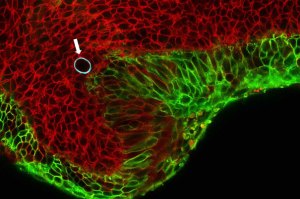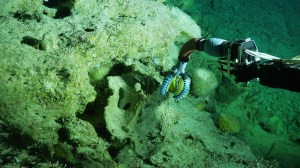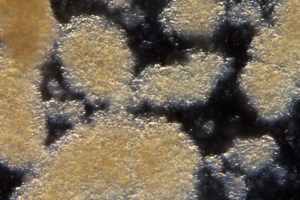Tag: Wyss Institute for Biologically Inspired Engineering at Harvard University
-
Health
Probiotic hydrogels heal gut wounds that other treatments can’t reach
Harvard researchers have developed hydrogels that can be produced from bacterial cultures and applied to intestinal surfaces for faster wound healing.
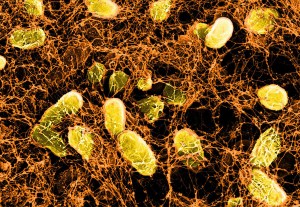
-
Science & Tech
Electrifying insights into how bodies form
A researcher is reviving the study of bioelectricity to learn how cells communicate with each other to form tissues and organs, and how harnessing those signals could one day lead to truly regenerative medicine, in which amputees could simply regrow limbs.
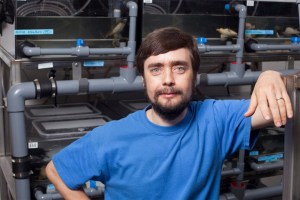
-
Science & Tech
Using body heat to speed healing
To speeding up wound healing, researchers have developed active adhesive dressings based on heat-responsive hydrogels that are mechanically active, stretchy, tough, highly adhesive, and antimicrobial.
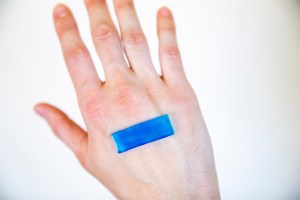
-
Science & Tech
The little robot that could
The iRobot Corp. announced its acquisition of Root Robotics, Inc., whose educational Root coding robot got its start as a summer research project at the Wyss Institute for Biologically Inspired Engineering at Harvard University in 2011
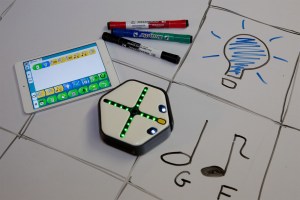
-
Science & Tech
Size a concern when replacing heart valves
Getting the perfect-size artificial heart valve without ever actually looking at the patient’s heart was a challenge … until now. Researchers at the Wyss at Harvard University have created a 3-D printing workflow that allows cardiologists to evaluate how different valve sizes will interact with each patient’s unique anatomy
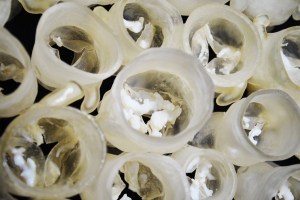
-
Health
Keeping the genetic code clean
Researchers have taken the first step toward removing unwanted cells by converting the CRISPR/Cas9 genome-engineering system into a genome-surveillance tool that removes newly occurring disease-associated mutations.
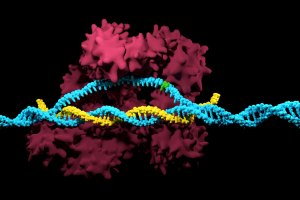
-
Science & Tech
Novel cancer treatment gets major boost
The Wyss Institute and Harvard John A. Paulson School of Engineering and Applied Sciences announced Novartis will have access to commercially develop their therapeutic, biomaterial-based cancer vaccine technology.
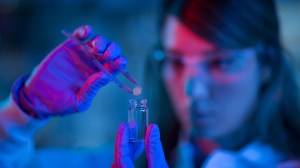
-
Science & Tech
Adhesives that can seal wounds
Wyss Institute researchers have developed a new super-strong hydrogel adhesive that can stick to dynamically moving tissues — such as a beating heart — even in the presence of blood.
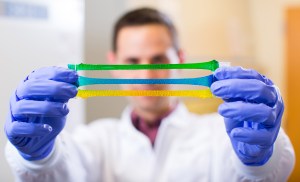
-
Science & Tech
Personal cancer vaccines show promise
Researchers have found that an injectable scaffold that incorporates tumor-specific peptides can be personalized, stimulating a patient’s immune system to destroy his or her unique cancer tumors.
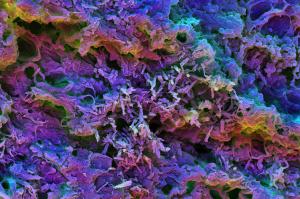
-
Science & Tech
An exosuit tailored to fit
Based on an algorithm, researchers can quickly direct the exosuit when and where to deliver its assistive force to improve hip extension.
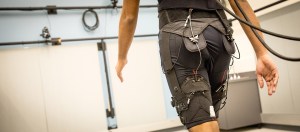
-
Health
A hydrogel that helps stop uncontrolled bleeding
Harvard researchers have developed a hydrogel that can be easily injected into blood vessels, helping to stop uncontrolled bleeding even in patients on blood-thinners or with bleeding disorders.
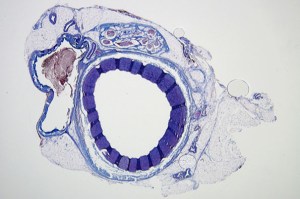
-
Science & Tech
Bionic leaf turns sunlight into liquid fuel
A cross-disciplinary team at Harvard has created a system that uses solar energy to split water molecules and hydrogen-eating bacteria to produce liquid fuels.
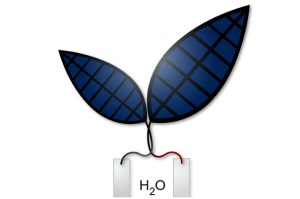
-
Health
Paper disc can quickly detect Zika virus in the field
Researchers at the Wyss Institute at Harvard have developed a workflow that could diagnose a patient with Zika within two to three hours. The goal of developing the low-cost, rapid paper-based diagnostic system for strain-specific detection of the Zika virus is its use in the field to screen blood, urine, or saliva samples.
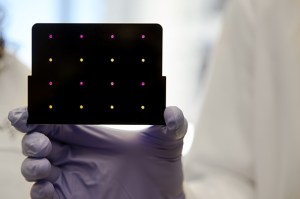
-
Science & Tech
3-D material changes shape as it prepares for next task
Harvard researchers have designed a new type of foldable material that is versatile, tunable, and self-actuated. It can change size, volume, and shape; it can fold flat to withstand the weight of an elephant without breaking, and pop right back up to prepare for the next task.
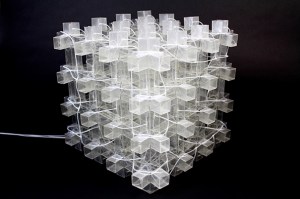
-
Science & Tech
Creating 3-D tissue and its potential for regeneration
“This latest work extends the capabilities of our multi-material bioprinting platform to thick human tissues, bringing us one step closer to creating architectures for tissue repair and regeneration,” says the study’s senior author, Jennifer A. Lewis of both the Wyss Institute and Harvard’s Paulson School for Engineering and Applied Sciences.
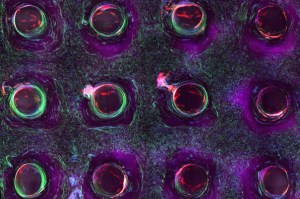
-
Science & Tech
Mechanical stimulation shown to repair muscle
Harvard research teams find a promising new approach that uses direct mechanical stimulation to repair severely damaged skeletal muscles.

-
Science & Tech
4D-printed structure changes shape when placed in water
A team of scientists at the Wyss Institute for Biologically Inspired Engineering at Harvard University and the Harvard John A. Paulson School of Engineering and Applied Sciences (SEAS) has evolved their microscale 3-D printing technology to the fourth dimension, time.
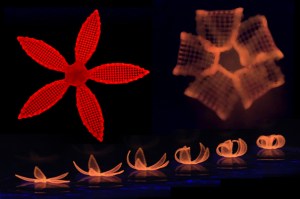
-
Health
Closer to detecting when and why blood clots form
A research team at the Wyss Institute has developed a novel microfluidic device in which blood flows through a lifelike network of small “vessels.” Using automated pressure sensors and a proprietary algorithm, the data acquired is analyzed in real time and precisely predicts when a certain blood sample will obstruct the blood vessel network.
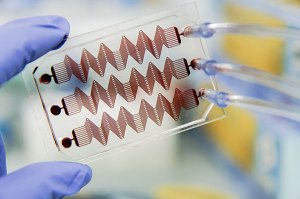
-
Health
COPD, asthma now can be studied outside the body
A multicomponent, microfluidic small airway-on-a-chip model provides new opportunities to study human lung inflammatory disorders such as chronic obstructive pulmonary disease (COPD) and asthma, and to test preclinical drug candidates outside the human body.

-
Health
Human-gut-on-a-chip model offers hope for IBD sufferers
In a new study, the Wyss Institute’s human-gut-on-a-chip technology is used to co-culture gut microbiome and human intestinal cells, which could spur innovation of novel therapies for inflammatory bowel diseases.

-
Campus & Community
3 named to National Academy of Inventors
Three Harvard professors and scientists have been named fellows of the National Academy of Inventors.
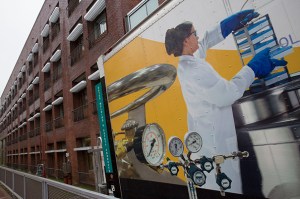
-
Health
Microbiomes could hold keys to improving life
A group of 48 scientists from 50 institutions in the U.S. has formed the Unified Microbiome Initiative Consortium (UMIC). The UMIC’s goal is to drive cutting-edge microbiome research, enabling breakthrough advances in medicine, ecosystem management, sustainable energy, and production of commodities.

-
Health
Blood clot breakthrough uses drug-device combo
Harvard-affiliated researchers are working on a procedure that will allow fully obstructed blood clots in the brain to be cleared using a device that opens a small channel through the blockage, which combines with a clot-busting drug to target the obstructed site.
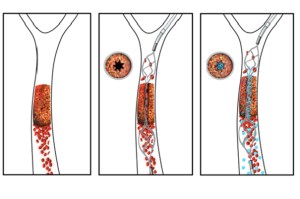
-
Science & Tech
Wyss improves sepsis device
Scientists at the Wyss Institute have improved a device developed last year to treat sepsis that works by mimicking the human spleen. The new device is better positioned for near-term use in clinics.
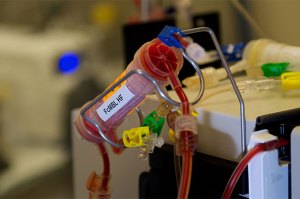
-
Science & Tech
Recruiting bacteria for innovation
A team at the Wyss Institute for Biologically Inspired Engineering at Harvard University sees biofilms as a robust new platform for designer nanomaterials that could help clean polluted rivers, manufacture pharmaceutical products, fabricate new textiles, and more.
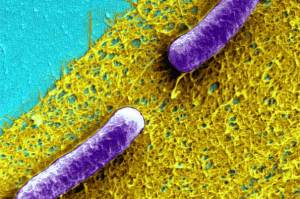
-
Science & Tech
The $3 million suit
The Wyss Institute for Biologically Inspired Engineering at Harvard University has been awarded a first-phase, follow-on contract from the Defense Advanced Research Projects Agency to further develop its Soft Exosuit ― a wearable robot — alternative versions of which could eventually help those with limited mobility as well.
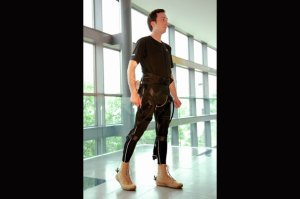
-
Health
Measuring life’s tugs and nudges
Harvard scientists have devised the first method to measure the push and pull of cells as embryonic tissue develops. The cells’ tiny forces are measured in 3-D tissues and living embryos.
